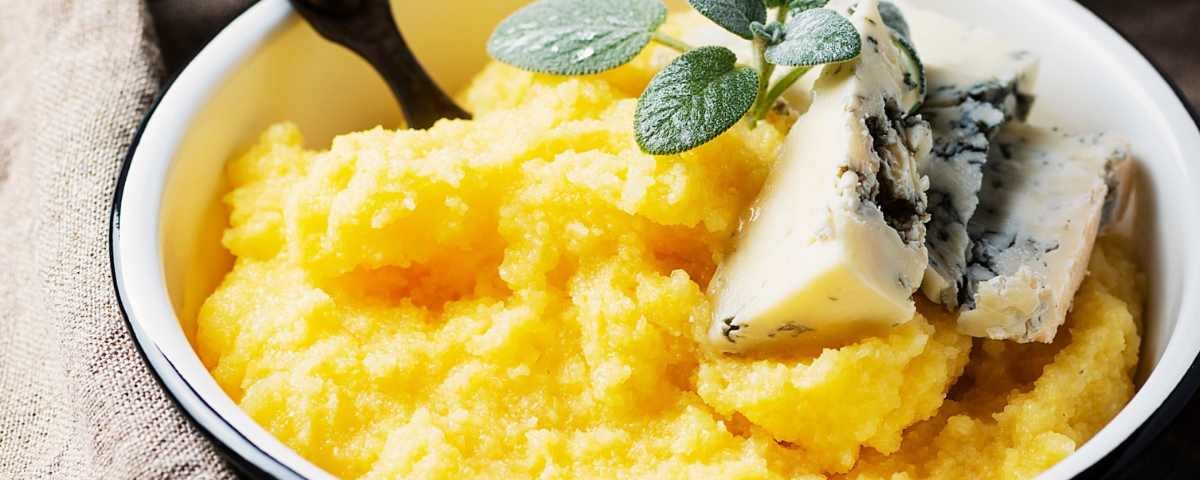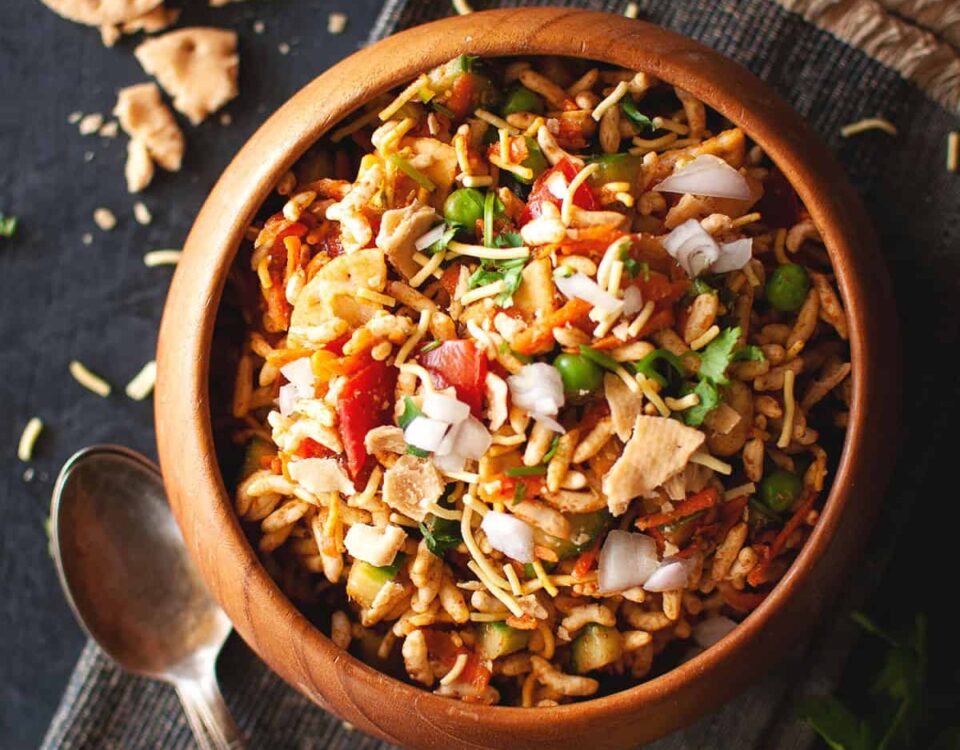
Pappa al Pomodoro: A Rustic Italian Tomato and Bread Soup

Croque Madame: A Classic French Brunch Delight
Polenta: A Classic Italian Comfort Food
Polenta is a traditional Italian Recipes dish made from ground cornmeal, known for its versatility and rich, comforting flavor. It has been a staple in Italian cuisine for centuries, particularly in the northern regions, where it serves as a base for a variety of dishes. Polenta can be served in many ways: creamy and soft, firm and grilled, or even baked. In this article, we’ll explore the history of polenta, discuss essential ingredients, provide a step-by-step recipe, and share tips to ensure your polenta is as authentic and delicious as possible.
The History of Polenta
Polenta has a long history that dates back to ancient times. Before corn was introduced to Europe from the Americas, polenta was made from various grains like millet, spelt, or chestnut flour. With the arrival of corn in the 16th century, maize quickly became the primary ingredient for polenta, especially in the northern regions of Italy, such as Lombardy, Veneto, and Friuli.
Traditionally, polenta was considered peasant food, as it was inexpensive, filling, and easy to prepare. It was often served as a main course, accompanied by whatever vegetables, cheese, or meats were available. Over time, polenta has evolved into a versatile dish enjoyed by people of all social classes, with countless variations and preparations.
Essential Ingredients for Polenta
To make traditional polenta, you will need the following ingredients:
- 1 cup coarse-ground cornmeal (preferably stone-ground)
- 4 cups water (or a mix of water and milk for a creamier texture)
- 1 teaspoon salt
- 2 tablespoons unsalted butter (optional)
- 1/2 cup grated Parmesan cheese (optional)
- Freshly ground black pepper (optional, for seasoning)
Step-by-Step Recipe for Polenta
Step 1: Prepare the Ingredients
- Measure the Cornmeal: Ensure you have the correct type of cornmeal. Coarse-ground cornmeal is ideal for traditional polenta, as it provides a better texture and flavor. You can also use stone-ground cornmeal for a more rustic, authentic dish.
- Heat the Water: In a large, heavy-bottomed pot, bring 4 cups of water to a boil. For a creamier polenta, you can replace half of the water with milk.
Step 2: Cook the Polenta
- Add the Cornmeal: Once the water is boiling, reduce the heat to low. Gradually whisk in the cornmeal, adding it in a slow, steady stream. This helps prevent lumps from forming.
- Stir Continuously: Stir the polenta continuously with a wooden spoon or a whisk for the first few minutes. This ensures that the cornmeal is fully incorporated and prevents it from sticking to the bottom of the pot.
- Simmer Gently: After the initial stirring, reduce the heat to the lowest setting. Cover the pot partially with a lid, leaving a gap to allow steam to escape. Let the polenta simmer gently, stirring every 5-10 minutes. The polenta will thicken as it cooks.
Step 3: Finish the Polenta
- Cook Until Thickened: Continue cooking the polenta for about 30-40 minutes, or until it reaches your desired consistency. The polenta should be smooth and creamy, with the grains fully cooked and tender.
- Add Butter and Cheese (Optional): If you like, stir in the unsalted butter and grated Parmesan cheese for added richness and flavor. Season with freshly ground black pepper to taste.
Step 4: Serve the Polenta
- Serve Soft: For a classic soft polenta, serve it immediately while it’s still warm and creamy. Spoon the polenta onto plates or into bowls, and top with your favorite sauces, vegetables, or meats.
- Cool for Firm Polenta: If you prefer firm polenta, pour the cooked polenta into a greased baking dish or a shallow tray. Smooth the top and let it cool completely. Once firm, you can cut the polenta into squares, slices, or wedges, and serve it grilled, baked, or fried.
Tips for Making the Perfect Polenta
- Use Coarse-Ground Cornmeal: The texture of polenta depends on the type of cornmeal used. Coarse-ground or stone-ground cornmeal gives polenta its signature texture. Avoid using fine cornmeal, which can result in a mushy consistency.
- Stir Consistently: Stirring the polenta regularly during cooking helps prevent it from sticking to the pot and ensures an even, smooth texture.
- Cook Low and Slow: Polenta benefits from slow, gentle cooking. Take your time and cook it on low heat to allow the cornmeal to soften and the flavors to develop fully.
- Customize the Flavor: Polenta is a blank canvas that can be flavored in countless ways. Experiment with different types of cheese, herbs, or even spices to create your perfect version.
Variations of Polenta
Creamy Polenta
For an extra creamy texture, replace half of the water with milk or cream. You can also add more butter and cheese at the end of cooking for a richer flavor. This version pairs beautifully with braised meats or sautéed mushrooms.
Grilled Polenta
Once the polenta has cooled and set, cut it into squares or wedges. Brush each piece with olive oil and grill until golden and crisp on the outside. Grilled polenta is a perfect accompaniment to grilled meats or vegetables.
Baked Polenta
Spread the cooked polenta into a baking dish and top with your favorite sauce, such as marinara or a rich meat ragu. Sprinkle with cheese and bake in the oven until the top is bubbly and golden. This makes for a hearty and comforting meal.
Polenta Fries
For a fun twist, pour the cooked polenta into a shallow tray and let it cool completely. Once firm, cut the polenta into strips, brush with olive oil, and bake or fry until crispy. Serve with a dipping sauce like marinara or aioli for a tasty snack or side dish.
Polenta with Sausage and Greens
Top creamy polenta with sautéed Italian recipes sausage and wilted greens like spinach or kale. This rustic combination is full of flavor and makes for a satisfying meal.
Nutritional Information
Polenta is a nutritious and versatile dish that can be enjoyed in many forms. Here’s an approximate nutritional breakdown per serving (based on a 4-serving recipe without optional add-ins):
- Calories: 150
- Protein: 3g
- Fat: 1g
- Carbohydrates: 32g
- Fiber: 2g
- Sodium: 400mg
Conclusion
Polenta is a classic Italian comfort food that offers endless possibilities for customization and enjoyment. Whether you prefer it creamy and soft, firm and grilled, or baked with rich toppings, polenta is a versatile dish that can be adapted to suit any taste. By following this step-by-step recipe and using high-quality ingredients, you can create an authentic polenta that captures the essence of Italian cuisine.
Whether you stick to the traditional recipe or experiment with variations, the key to great polenta lies in the cooking process and the quality of the ingredients. Enjoy making and savoring this timeless Italian dish, and don’t forget to explore more international recipes and cooking tips on our website. Buon appetito!


